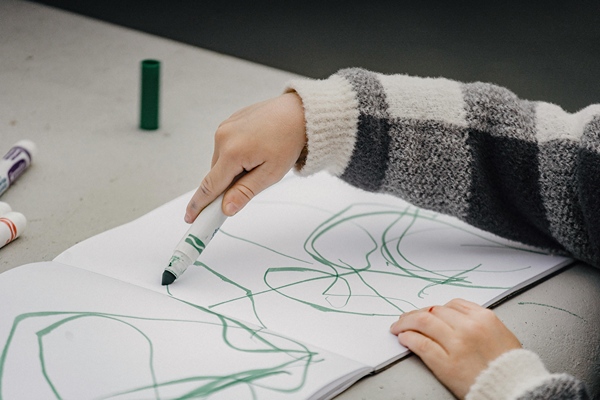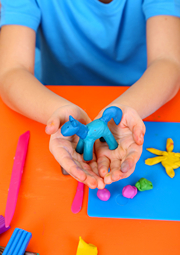Homeschooling Ideas: 5 Creative and Engaging Activities for Moms to Try
Homeschooling offers a unique opportunity to provide children with a tailored and enriching education, but keeping them engaged and motivated can also be challenging. Balancing teacher and parent roles requires creativity, patience, and flexibility.
Thankfully, homeschooling provides a wide array of possibilities to incorporate fun and interactive learning activities that go beyond traditional textbooks. With a focus on practical skills, hands-on projects, and creative expression, homeschooling can be both educational and enjoyable for children.
Let’s explore five creative and engaging activities new and experienced homeschooling moms can incorporate into their routines. These activities make learning fun and help children develop essential academic, social, and emotional skills.
Hands-On STEM Projects
Incorporating STEM (Science, Technology, Engineering, and Mathematics) activities into homeschooling is essential for developing critical thinking and problem-solving skills. STEM projects engage children in practical, hands-on learning, where they can explore concepts like engineering, physics, and chemistry in a fun and interactive way. With some basic materials and imagination, your homeschool can become a hub of invention and discovery.
One fun way to introduce STEM concepts is by organising a Lego engineering challenge. You can set up challenges where your child builds structures, such as a bridge that supports weight, a vehicle that moves across the floor, or even an entire lego city. These tasks teach engineering principles like balance, stability, and structural design, while encouraging creativity and teamwork.
Outdoor Science and Exploration
One of the most exciting ways to bring learning to life is by stepping outside and immersing children in nature. The outdoors offers endless opportunities for hands-on science education, physical activity, and environmental awareness. Children naturally love to explore their surroundings, and nature-based learning fosters curiosity, critical thinking, and a deeper understanding of the world around them.
For instance, you can take your child on a nature scavenger hunt during a park or backyard walk. Prepare a list of items for them to find, such as different types of leaves, rocks, or insects. You can explain how each item fits into the ecosystem as they search, sparking discussions about biology, environmental science, and ecology. This activity encourages children to observe and interact with their environment, sharpening their observation skills and promoting critical thinking.
Another engaging nature-based project is starting a small garden. Whether it’s growing vegetables or flowers, gardening is an excellent way to teach children about biology, responsibility, and environmental stewardship. As they care for the plants and watch them grow, you can introduce lessons on photosynthesis, plant anatomy, and the role of ecosystems in supporting life. Gardening teaches important science concepts and encourages patience, responsibility, and a sense of accomplishment.
Art and Creative Writing
Creative expression is a vital component of any well-rounded education. Art and writing activities foster imagination and help children develop emotional intelligence, communication skills, and a sense of self. Incorporating art and creative writing into your homeschooling routine can help you create a space for your child to explore their thoughts and feelings while developing literacy and fine motor skills.

A fun way to combine art and writing is to encourage your child to write and illustrate their own storybook. This project allows them to create characters, develop a plot, and bring their story to life through drawings. Storytelling helps children improve their narrative skills, build vocabulary, and understand plot structure. It also nurtures their creativity and accomplishment while holding their finished story.
Cooking and Baking
The kitchen is a great place to incorporate learning into everyday activities. Cooking and baking provide an opportunity to teach maths, science, and nutrition while developing essential life skills. Involving children in meal preparation can help them understand concepts like measuring, fractions, and following instructions, all while having fun and bonding as a family.
One educational approach to cooking is through recipe maths. Ask your child to help double or halve a recipe, requiring them to use multiplication and division to adjust the measurements. This activity teaches practical maths skills, such as fractions and conversions, in a real-world context. As they measure ingredients, follow steps, and manage time, children learn how maths applies to daily life and develop problem-solving skills.
Interactive History Lessons
History lessons don’t have to be confined to textbooks. Making history interactive and immersive allows you to help children understand the people, places, and events that have shaped our world. Homeschooling provides the flexibility to bring history to life through creative activities that make learning fun and memorable.
One way to engage children in history is through role-playing. Choose a historical figure or period, and encourage your child to dress up and reenact key events. For instance, they can act out the signing of the Declaration of Independence or pretend to be an explorer on a voyage across the seas. Role-playing makes history come alive by helping children visualise and connect with the past in a personal way.
Final Words
Homeschooling offers endless opportunities for creative and engaging learning experiences. These activities discussed in this article cover core academic subjects and foster critical thinking, creativity, and a lifelong love of learning. The key is to keep things flexible, fun, and rooted in your child’s natural curiosity.
Read about the 10 benefits of homeschooling math to your child.




